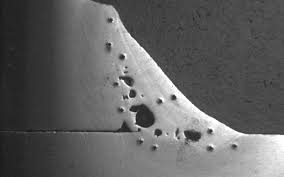What is Porosity in Welding: Typical Sources and Effective Remedies
Recognizing Porosity in Welding: Exploring Reasons, Impacts, and Avoidance Methods
Porosity in welding is a relentless obstacle that can significantly influence the top quality and stability of welds. As experts in the welding industry are cognizant, understanding the causes, impacts, and avoidance strategies associated with porosity is essential for accomplishing robust and trustworthy welds. By diving into the source of porosity, analyzing its destructive impacts on weld high quality, and exploring reliable prevention methods, welders can enhance their understanding and skills to create high-quality welds continually. The detailed interaction of factors adding to porosity calls for an extensive understanding and a proactive approach to guarantee effective welding results.
Typical Sources Of Porosity
Porosity in welding is mainly created by a mix of elements such as contamination, inappropriate securing, and insufficient gas coverage throughout the welding procedure. Contamination, in the form of dirt, oil, or rust on the welding surface, produces gas pockets when heated up, resulting in porosity in the weld. Incorrect protecting occurs when the shielding gas, typically used in processes like MIG and TIG welding, is incapable to fully protect the molten weld pool from reacting with the surrounding air, leading to gas entrapment and succeeding porosity. In addition, insufficient gas insurance coverage, typically because of wrong flow rates or nozzle positioning, can leave parts of the weld unguarded, permitting porosity to form. These elements jointly add to the development of gaps within the weld, deteriorating its honesty and potentially causing architectural concerns. Understanding and resolving these usual causes are essential action in avoiding porosity and making sure the quality and toughness of bonded joints.
Effects on Weld Top Quality
The presence of porosity in a weld can significantly endanger the general quality and honesty of the welded joint. Porosity within a weld creates gaps or tooth cavities that weaken the framework, making it much more susceptible to fracturing, rust, and mechanical failing. These voids work as tension concentrators, reducing the load-bearing capability of the weld and raising the possibility of early failing under used stress. Furthermore, porosity can additionally work as possible websites for hydrogen entrapment, additional aggravating the destruction of the weld's mechanical homes.
Additionally, porosity can hinder the performance of non-destructive screening (NDT) methods, making it challenging to identify various other problems or gaps within the weld. This can result in substantial safety and security issues, especially in critical applications where the architectural integrity of the bonded elements is paramount.

Prevention Techniques Review
Offered the damaging impact of porosity on weld top quality, efficient prevention strategies are important to maintaining the architectural integrity of next bonded joints. One of the key prevention techniques is detailed cleaning of the base products before welding. Contaminants such as oil, oil, corrosion, and wetness can contribute to porosity, so making sure a clean job surface is crucial. Appropriate storage space of welding consumables in dry conditions is also vital to stop moisture absorption, which can bring about gas entrapment during welding. Furthermore, selecting the proper welding specifications, such as voltage, existing, and travel speed, can aid reduce the danger of porosity formation. Making certain sufficient protecting gas circulation and coverage is an additional critical prevention technique, as not enough gas protection can cause atmospheric contamination and porosity. Proper welder training and certification are crucial for implementing preventive procedures successfully and continually. By integrating these prevention techniques into welding techniques, the incident of porosity can be considerably lowered, causing more powerful and more trusted welded joints.
Relevance of Correct Shielding
Correct securing in welding plays an essential duty in stopping atmospheric contamination and ensuring the stability of welded joints. Protecting gases, such as argon, helium, or a blend of both, are commonly made use of to secure the weld pool from responding with aspects in the air like oxygen and nitrogen. When these responsive aspects enter into contact with the hot weld swimming pool, they can trigger porosity, resulting in weak welds with lowered mechanical buildings.

Insufficient shielding can lead to numerous problems like porosity, spatter, and oxidation, jeopardizing the structural stability of the welded joint. Sticking to appropriate protecting methods is vital to create top notch welds with marginal defects and ensure the durability and reliability of the welded parts.
Tracking and Control Methods
Just how can welders successfully monitor and control the welding process to make sure optimum outcomes and stop flaws like porosity? By continually monitoring these variables, welders can identify deviations from the excellent conditions and make prompt adjustments to prevent porosity development.

Furthermore, executing appropriate training programs for welders is crucial for monitoring and regulating Visit Website the welding procedure efficiently. What is Porosity. Educating welders on the relevance of keeping regular specifications, such as proper gas securing and travel rate, can help protect against porosity concerns. Routine assessments and certifications can likewise ensure that welders are skilled in surveillance and regulating welding processes
Furthermore, using automated welding systems can enhance surveillance and control capabilities. These systems can precisely regulate welding specifications, decreasing the chance of human error and making certain regular weld top quality. By incorporating sophisticated surveillance technologies, training programs, and automated systems, welders can properly monitor and manage the welding procedure to reduce porosity flaws and achieve top notch welds.
Verdict
